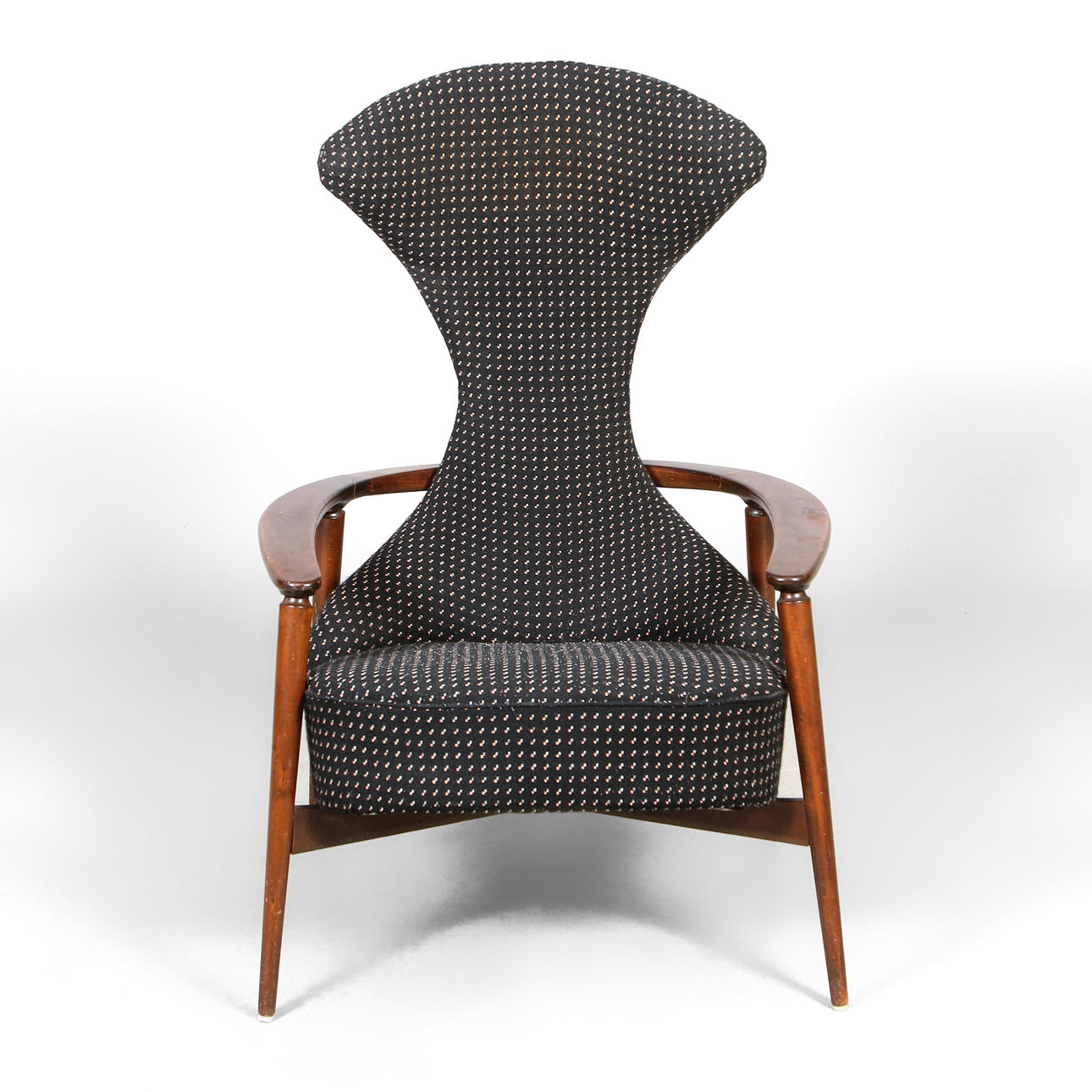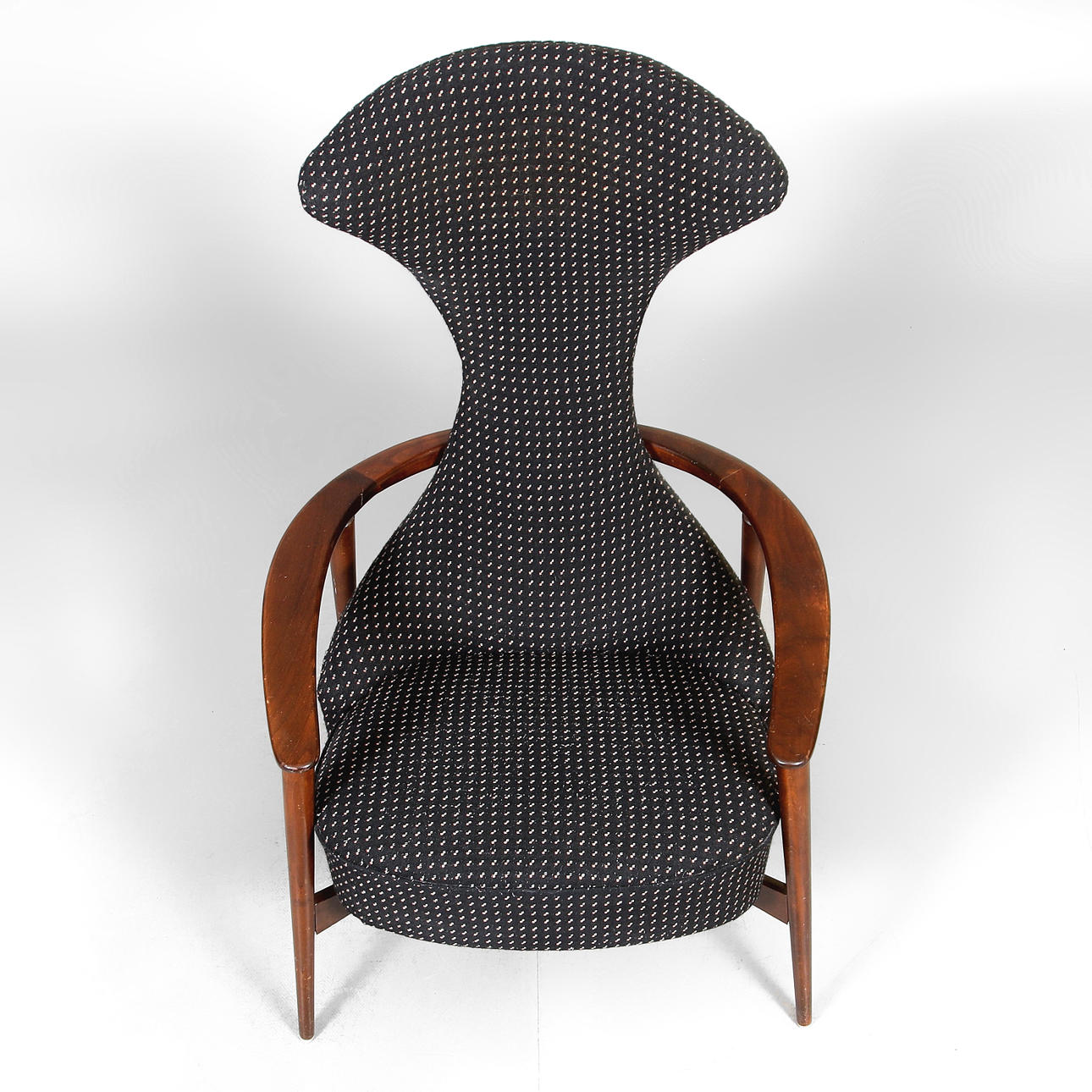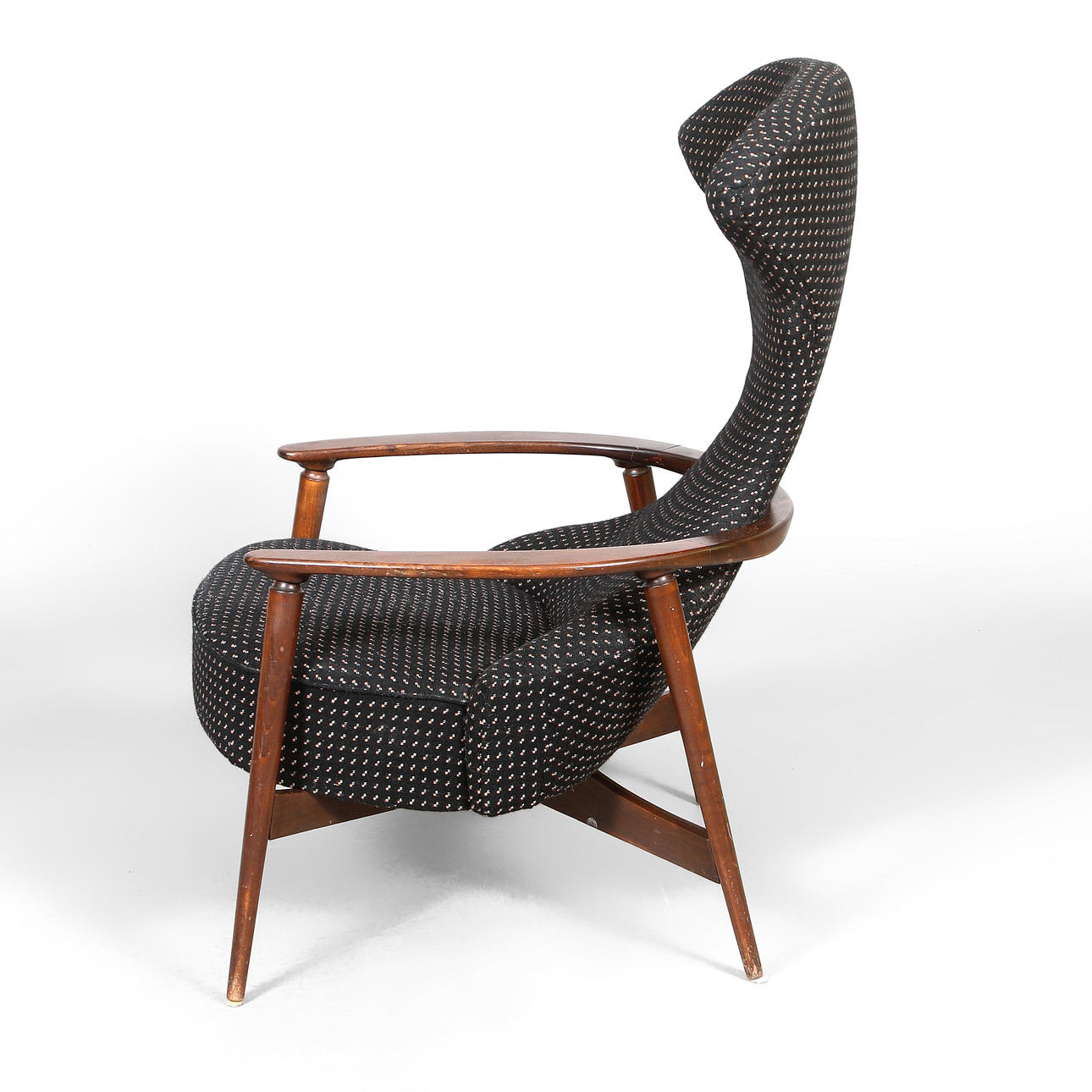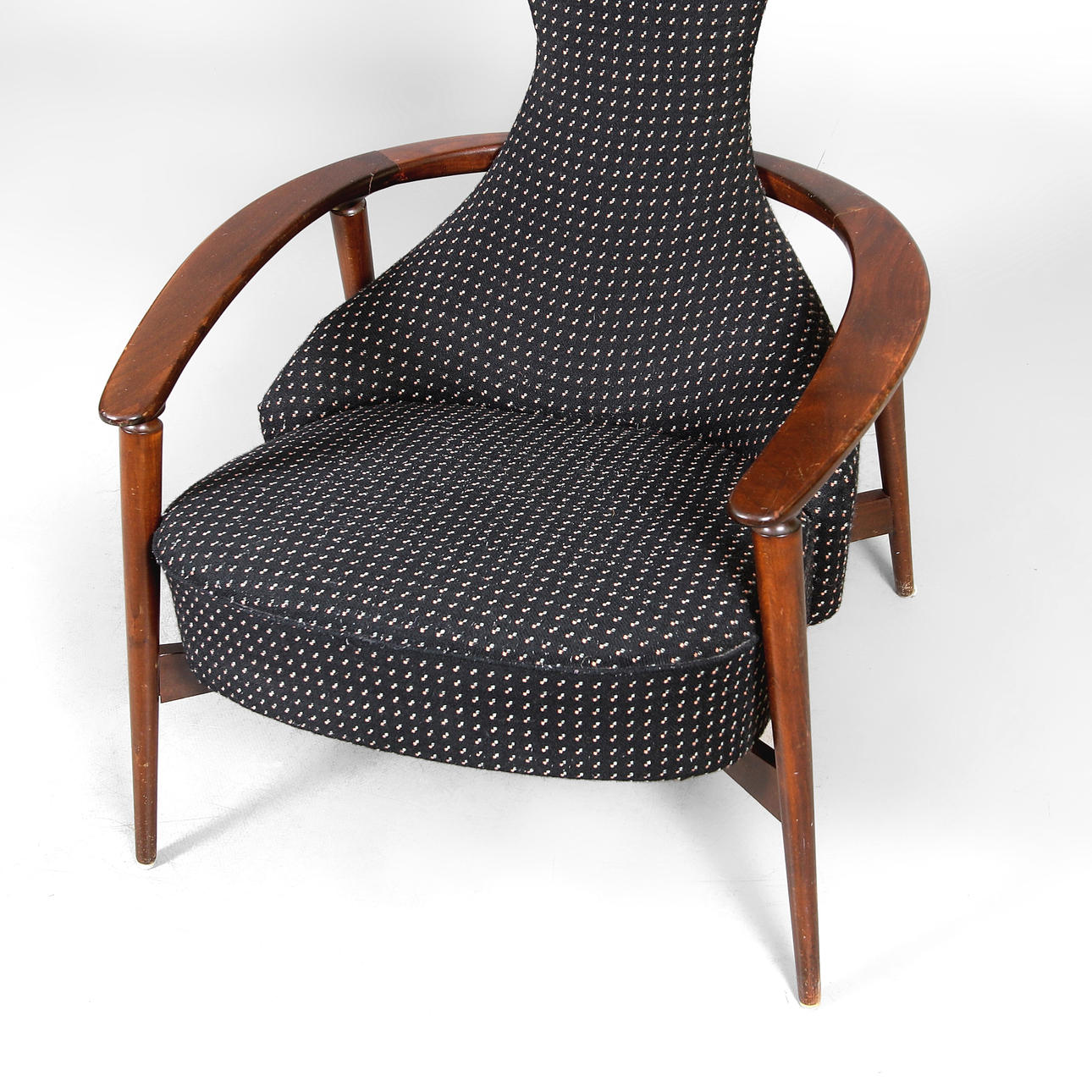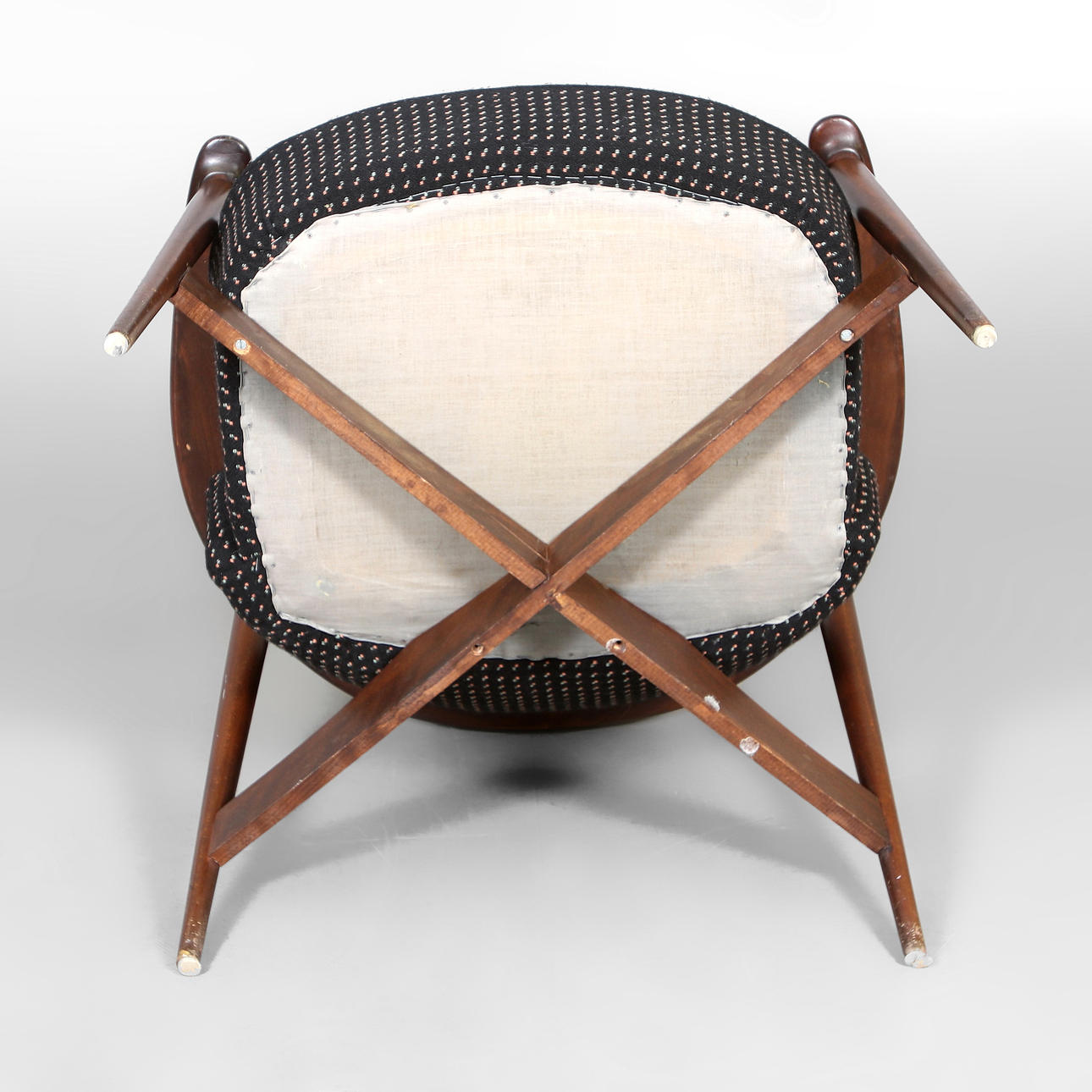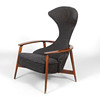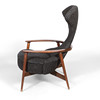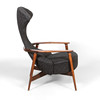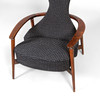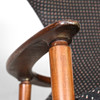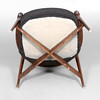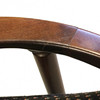BENGT RUDA. Armchair, "Cavelli", IKEA. 1958/59.
This auction is closed, but maybe you like the following items?
Description
Frame of red beech, stained in teak color. Padded seat and back. Dressed in blue/black textile. Length 72, width 86, sheath 105 cm.
"Welcome Bengt Ruda!
In the autumn of 1957, Ikéa managed to tie the prominent architect Bengt Ruda, known as the special designer of the youth, to the company. Anyone who has dealt with modern interior design knows him as one of our country's most skilled designers. He is also one of those who made Swedish furniture known and respected all over the world. Already in this reprint of catalog -58 we show many samples of his skill.
After graduating from the Higher School of Art, architect Ruda studied abroad, including a. in England, Italy and Switzerland. He has received scholarships and prizes from the Swedish Crafts Association and has worked as a teacher in furniture drawing. Represented at several international exhibitions.
We welcome architect Bengt Ruda to Ikéa and regard his employment as another success in our efforts to offer our customers the best in our industry." When IKEA managed to attract Bengt Ruda in 1957, it was a real prestige acquisition. Ruda comes from A/B Nordiska Kompaniet, where he produced a series of well-known models. These include the Italian-inspired Ombord seating group, the Z armchair and the pretty armchair 563-037. The latter became almost groundbreaking and gave rise to several imitations. The closest came the Sjökvist brothers, whose version was decided in Jönköping's Court of Appeal on 30 October 1956. After that, Ruda's model came to be popularly called the "Court Armchair". That Ruda chooses to leave the respected company A/B Nordiska Kompaniet in favor of the upstart IKEA, which at this time is facing opposition from many players in the Swedish furniture market, is startling. Therefore, it is easy to understand IKEA's very detailed presentation as reproduced in the quote above.
In the first year, Bengt Ruda offers IKEA's customers the Joker armchair, with shapes similar to those of his time at NK, the chunky Gracita seating group, the pretty Body bookcase with gray lacquered birch ends, the Båge wall shelf, a response to the String shelf and displayed at the Möbelmässan in Cologne 1958, Grill model chair and table (where it has subsequently come to attention), the Paus day bed with the description "feather in the hat of architect Bengt Ruda" and the roll table Rollit with "shaped edges".
The following year, Ruda's model flora was expanded with several variants. One of these stands out as it is introduced on the spread over pages ten and eleven: "model CAVELLI - a modern aristocrat, presented by Bengt Ruda" Ruda had been allowed to take the turns and created an armchair where both the stand and the seat tub had an exceptional design. IKEA's catalog author also let the readers understand that the model stood out in relation to the rest of the range: "Here, a confident designer has put his hand to the bold construction. Cavelli is a very extreme armchair: why not dare to have the lines of 1965 already in 1959? Cavelli will be noticed in your home - and admired. You have a wonderful feeling of luxury when you curl up inside its softly embracing armrest, sink deep into the foam padded seat and let your neck rest against the neck pillow, which seems to grow up on an elegant neck. Cavelli is based on a strong frame with visible wood parts in red beech, stained in teak color. Elastic padded seat, completely overstuffed with foam rubber/foam plastic as well as the entire back. Even the back is fully padded. No effort has been spared, no expense has been spared to make Cavelli an aristocrat in the world of the 60s. Exclusive right: Ikéa.” Cavelli belongs to the extremes of IKEA's collection. Its expression is unparalleled in the company's product flora during the 1950s and 1960s. It also symbolizes the transition from an affordable department store to an actor with the ambition to furnish, decorate and be part of creating the Swedish public home. Bengt Ruda's transition from A/B Nordiska Kompaniet to IKEA is a milestone in the furniture giant's history and a flying start for his own design office. For IKEA, Ruda would produce a long series of models that today are regarded as Swedish design classics. Cavelli is not someone like that. On the contrary. It is probably the most difficult to find and most sought after model in not only Ruda's but in the entire IKEA collection.
According to an article at the Ikea Museum, this armchair was only produced in five copies.
Literature: The model depicted in Siesing, Andreas: Swedish furniture – Folk home form in wool, jacaranda, pine and beech, Bokförlaget Atlantis, 2015, page 136.
Ikea, catalog 1959, pages 10-11.
Article at the Ikea Museum "The story of IKEA - The story behind the products 1950s".
Condition
Dried padding in the back. Later cladding. Scratches. Brands. Minor crack in the rear part of the right armrest.
Resale right
Theme
Do you have something similar to sell? Get your items valued free of charge!
Description
Frame of red beech, stained in teak color. Padded seat and back. Dressed in blue/black textile. Length 72, width 86, sheath 105 cm.
"Welcome Bengt Ruda!
In the autumn of 1957, Ikéa managed to tie the prominent architect Bengt Ruda, known as the special designer of the youth, to the company. Anyone who has dealt with modern interior design knows him as one of our country's most skilled designers. He is also one of those who made Swedish furniture known and respected all over the world. Already in this reprint of catalog -58 we show many samples of his skill.
After graduating from the Higher School of Art, architect Ruda studied abroad, including a. in England, Italy and Switzerland. He has received scholarships and prizes from the Swedish Crafts Association and has worked as a teacher in furniture drawing. Represented at several international exhibitions.
We welcome architect Bengt Ruda to Ikéa and regard his employment as another success in our efforts to offer our customers the best in our industry." When IKEA managed to attract Bengt Ruda in 1957, it was a real prestige acquisition. Ruda comes from A/B Nordiska Kompaniet, where he produced a series of well-known models. These include the Italian-inspired Ombord seating group, the Z armchair and the pretty armchair 563-037. The latter became almost groundbreaking and gave rise to several imitations. The closest came the Sjökvist brothers, whose version was decided in Jönköping's Court of Appeal on 30 October 1956. After that, Ruda's model came to be popularly called the "Court Armchair". That Ruda chooses to leave the respected company A/B Nordiska Kompaniet in favor of the upstart IKEA, which at this time is facing opposition from many players in the Swedish furniture market, is startling. Therefore, it is easy to understand IKEA's very detailed presentation as reproduced in the quote above.
In the first year, Bengt Ruda offers IKEA's customers the Joker armchair, with shapes similar to those of his time at NK, the chunky Gracita seating group, the pretty Body bookcase with gray lacquered birch ends, the Båge wall shelf, a response to the String shelf and displayed at the Möbelmässan in Cologne 1958, Grill model chair and table (where it has subsequently come to attention), the Paus day bed with the description "feather in the hat of architect Bengt Ruda" and the roll table Rollit with "shaped edges".
The following year, Ruda's model flora was expanded with several variants. One of these stands out as it is introduced on the spread over pages ten and eleven: "model CAVELLI - a modern aristocrat, presented by Bengt Ruda" Ruda had been allowed to take the turns and created an armchair where both the stand and the seat tub had an exceptional design. IKEA's catalog author also let the readers understand that the model stood out in relation to the rest of the range: "Here, a confident designer has put his hand to the bold construction. Cavelli is a very extreme armchair: why not dare to have the lines of 1965 already in 1959? Cavelli will be noticed in your home - and admired. You have a wonderful feeling of luxury when you curl up inside its softly embracing armrest, sink deep into the foam padded seat and let your neck rest against the neck pillow, which seems to grow up on an elegant neck. Cavelli is based on a strong frame with visible wood parts in red beech, stained in teak color. Elastic padded seat, completely overstuffed with foam rubber/foam plastic as well as the entire back. Even the back is fully padded. No effort has been spared, no expense has been spared to make Cavelli an aristocrat in the world of the 60s. Exclusive right: Ikéa.” Cavelli belongs to the extremes of IKEA's collection. Its expression is unparalleled in the company's product flora during the 1950s and 1960s. It also symbolizes the transition from an affordable department store to an actor with the ambition to furnish, decorate and be part of creating the Swedish public home. Bengt Ruda's transition from A/B Nordiska Kompaniet to IKEA is a milestone in the furniture giant's history and a flying start for his own design office. For IKEA, Ruda would produce a long series of models that today are regarded as Swedish design classics. Cavelli is not someone like that. On the contrary. It is probably the most difficult to find and most sought after model in not only Ruda's but in the entire IKEA collection.
According to an article at the Ikea Museum, this armchair was only produced in five copies.
Literature: The model depicted in Siesing, Andreas: Swedish furniture – Folk home form in wool, jacaranda, pine and beech, Bokförlaget Atlantis, 2015, page 136.
Ikea, catalog 1959, pages 10-11.
Article at the Ikea Museum "The story of IKEA - The story behind the products 1950s".
Condition
Dried padding in the back. Later cladding. Scratches. Brands. Minor crack in the rear part of the right armrest.
Resale right
Theme
Do you have something similar to sell? Get your items valued free of charge!


